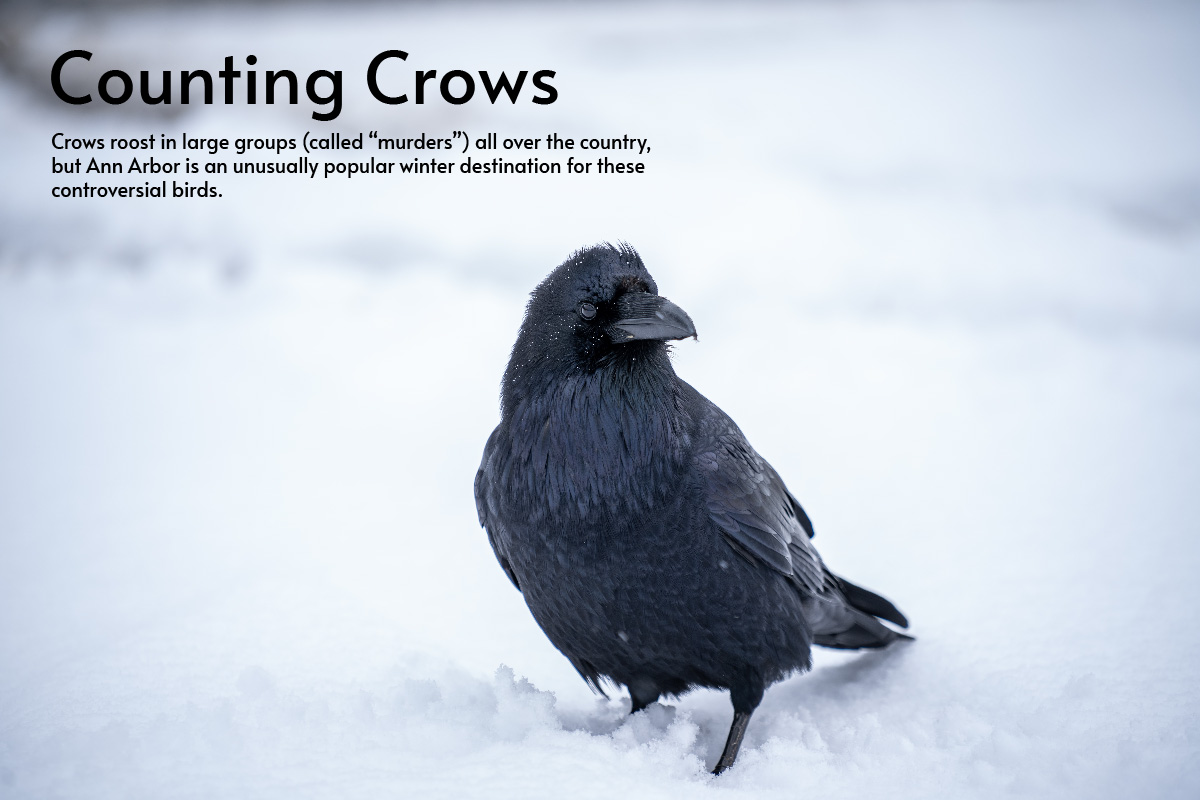
Crows roost in large groups all over the country, but Ann Arbor is an unusually popular winter destination for the birds, whose numbers some winters have reached up to 20,000.
Jessica Pace | The Washtenaw Voice
By DEBRA DESTEFANI
Staff Writer
Sometimes, you hear them before you see them. From the distance comes the “caw” of a single crow, which is shortly joined by several more. A few crows quickly become hundreds or sometimes thousands.
Soon, the symphony of the calls of hundreds of crows is overhead. Crows roost in large groups all over the country, but Ann Arbor is an unusually popular winter destination for the birds, whose numbers some winters have reached up to 20,000.
Michael Kielb, retired Eastern Michigan University professor and one of the authors of “The Birds of Washtenaw County, Michigan” has been tracking the location of the crow roost in Ann Arbor for decades.
“The birds spend their days in fields and there are lots of fields around Ann Arbor. They really like old corn and grain fields and mice as well, and they will eat those,” Kielb said.
“At night, they all leave wherever they are feeding and make these huge roosts because it really protects from grey horned owls.”
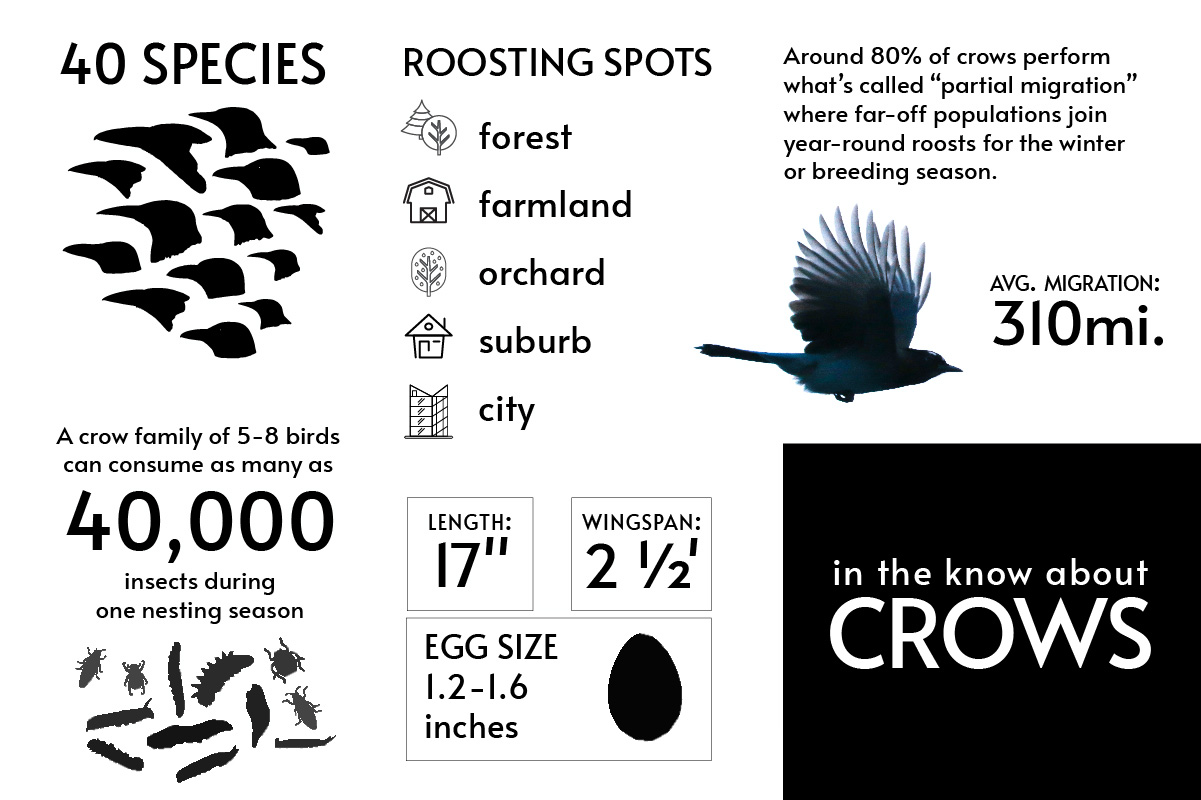
Jessica Pace | The Washtenaw Voice
This year, the murder decided to make their roost in the Forest Hill cemetery off of Observatory St and Geddes Ave., near downtown. This has been the “on-and-off” spot of choice for the crows for over 20 years, according to Kielb.
“Crows are very social; they really interact with one another. I think that’s part of them joining this big roost,” Kielb said.
“We’ve put in a concerted effort to count them over the years. The beauty of Ann Arbor is that you can go to the crow roost and count them and you’re a half-hour from home.”
The murder typically arrives in November, but the exact date can vary. It’s perfect timing for the Christmas Bird Count: an annual activity that catalogs what species–and how many–either pass through or make their homes in Ann Arbor for the winter.
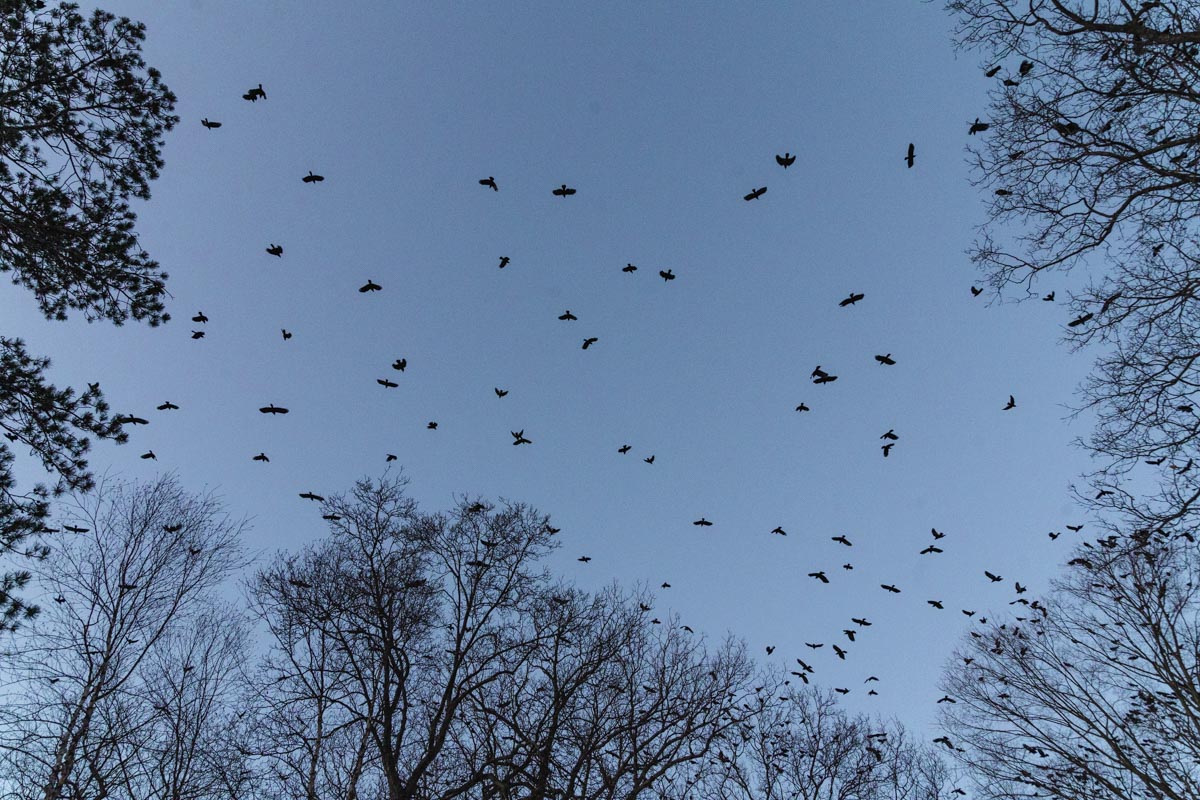
Crows are often featured in European mythology and folklore. Some even believe that a specific number of crows seen represents a specific meaning; for example, seeing 4 crows may bring the viewer wealth and prosperity.
Torrence Williams | The Washtenaw Voice
This year marks Ann Arbor’s 75th CBC. The CBC is a yearly nationwide ornithological effort with records dating back to 1940. Jacco Gelderloos, a resident of Ann Arbor since 1998, has been the area leader for the “southeastern chunk” of the CBC count circle for nearly 15 years.
Typically, around 65-75 bird enthusiasts participate in collecting the data, but this season saw well over 100 participants. What they record is then submitted and compiled into a database by the National Audubon Society, which according to Gelderloos is used to determine things like species population trends.
“This kind of citizen science is supremely important,” Gelderloos said. “It generates a data pool that professional scientists could never dream of generating. This research can then be used to come up with policies to protect a species.”
Gelderloos says the number of crows in Ann Arbor has fluctuated over the years, based on knowledge of roost location. He added that West Nile Virus also took its toll on the numbers.
“We’ve hit the 15,000-mark only twice since 2011,” Gelderloos said. “It seems though that the population is recovering and numbers look like they are climbing back to historic numbers, slowly but steadily.”
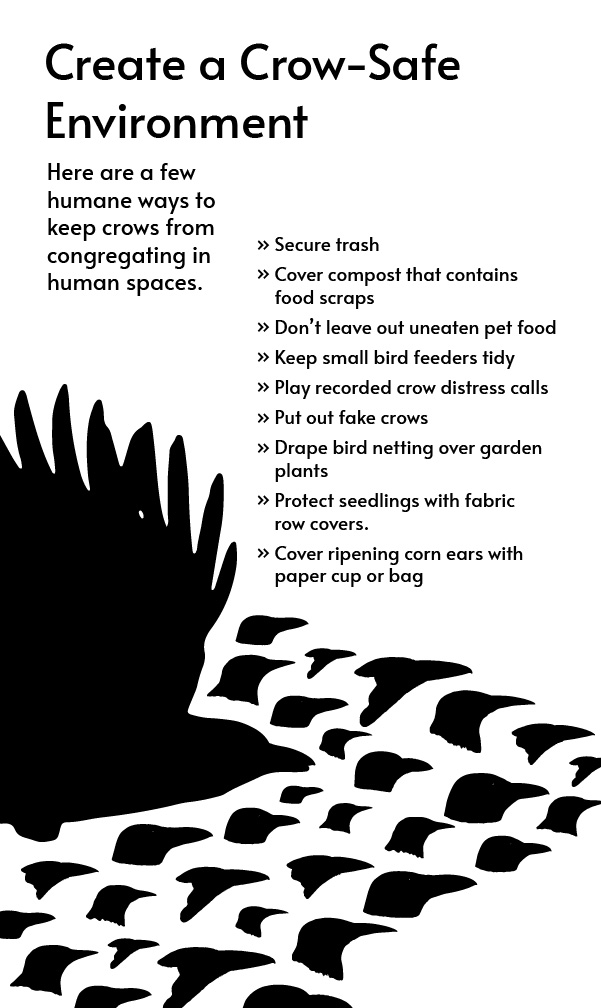
Graphic by Jessica Pace
But not everybody is a fan of the yearly crow invasion. Although they are masters of pest control, all birds, including crows, leave traces of their occupation behind them.
“They poop a lot,” Kielb said. “For years, people used to set off fireworks and things to keep the crows away from downtown because in the morning the sidewalks can be slick.”
On the other hand, with a diet of roadkill small mammals, the birds do have a positive ecological impact on the city by acting as a sort of clean-up crew and pest control.
According to the Humane Society, they also eat bugs that are detrimental to gardens, such as grubs and caterpillars.
Kielb says the best time to view the birds is when they come back to the cemetery to roost for the evening, between 5:00 and 6:00 p.m.
“We never got them all but the numbers have been hovering around the 10,000 range,” said Kielb. “It’s a pretty amazing event.”
Information about the Christmas Bird Count can be found on the Washtenaw Audubon Society’s webpage.
National data can be found on the National Audubon Society’s webpage at www.audubon.org.
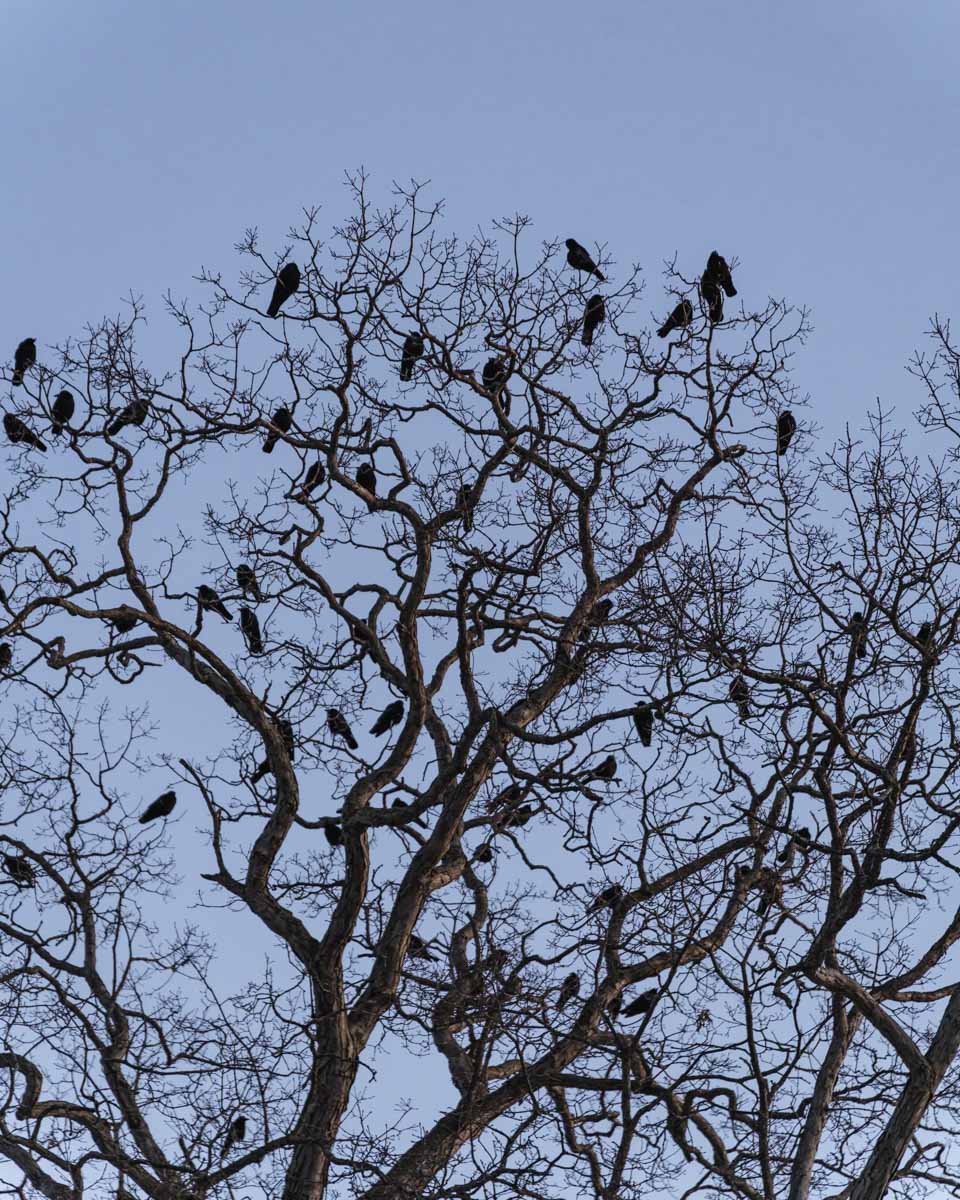
Crows and ravens can be difficult for some people to tell apart. According to experts, the most distinct difference is the noise they make: a crow makes a “caw, caw” noise while a raven makes a croaking sound.
Torrence Williams | The Washtenaw Voice



One Reply to “Counting crows in Ann Arbor”
Comments are closed.